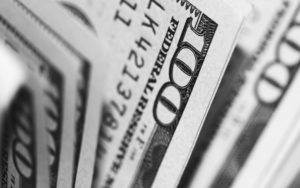 By Donna Arduin Kauranen
By Donna Arduin Kauranen
This article was originally published in Must Read Alaska on December 11, 2019.
One year ago, Gov. Mike Dunleavy submitted a budget representing the starting place for his budget challenge, a gap of $1.5 billion dollars on a $6.7 billion state funds budget, over a 20% difference between annual revenues and expenditures.
While Alaska’s budget gap had developed over time, the governor directed his Office of Management and Budget team to provide him options to close that gap in one year with no new revenues and no borrowing from reserves.
Alaska had borrowed from reserves for six years, drawing down rainy day funds and racking up a debt of over $10 billion to the Constitutional Budget Reserve (CBR). OMB worked with state agencies and brought options to the governor to meet his direction.
The Permanent Fund Dividend is not included in these numbers because, while the Alaska courts have ruled the Legislature can ignore statute and set a dividend amount through the budget, the governor has been, rightly, steadfast in his policy that dividends must be distributed according to decades-old law to Alaskans who are the owners of subsurface resources.
After the governor’s final budget submission in February, he made presentations around the state, some with Commissioner of Revenue Bruce Tangeman and me, laying out the case in numbers and graphs that Alaska had been spending beyond its means for years and needed to cut its budget, and that it was running out of time to do so, given the squandering of reserves that preceded his governorship.
He has more than one year to fulfill his policies, but seems to be taking budget reducing options off the table and is instead tilting toward additional taxes.
In addition to the mathematical reality, there was an economic reality to the governor’s policies. My former colleague and Alaska economist Ed King has been telling us consistently, Alaska is a high-taxed state. While this economic fact may not be obvious, as Milton Friedman said:
“Keep your eye on one thing and one thing only: how much government is spending, because that’s the true tax … If you’re not paying for it in the form of explicit taxes, you’re paying for it indirectly in the form of inflation or in the form of borrowing. The thing you should keep your eye on is what government spends, and the real problem is to hold down government spending as a fraction of our income, and if you do that, you can stop worrying about the debt.”
Every dollar government spends is a dollar not used for labor or investment in the private economy. If Alaska desires a diversified economy with a thriving private sector, it must reduce the amount of money government spends.
Alaska’s state government spends more than twice the amount on government than the national average of states on a per capita basis, or $13,000 per every man, woman and child in Alaska compared to $6,000 in other states.
While Alaska enjoys a strong GDP per capita, a significant portion of its GDP goes to government. In addition, Alaska’s private economy is significantly dependent upon government.
Compare Alaska to Florida, for example, a state whose existence was largely developed after the U.S. Army Corps of Engineers dredged the Everglades and when the availability of electrical air conditioning occurred not long before Alaska’s Statehood.
Florida’s state government spending per capita ($3,640) is only 27.6 percent of Alaska’s government spending per capita of $13,000.
State spending compared to state GDP in Alaska is over 18 percent while Florida’s is 7.5 percent.
Alaska’s government debt compared to state GDP is almost 20 percent, while Florida’s is just over 12 percent.
Alaska consistently loses population to other states, while Florida has had the second highest net domestic migration over the last decade.
The Fraser Institute measures the economic freedom of states based on taxes, spending, and labor market freedom. The Frazier Institute ranks Florida second best and Alaska third worst state on its economic freedom index.
I have learned through my vast experience that sticking with fiscal and economic policies that are politically difficult in the short run are economically beneficial for the long term. Washington D.C. has shown us this recently as the U.S. economy is enjoying the benefits of the Tax Cuts and Jobs Act of 2017, including a 50-year low in the nation’s jobless rate.
Alaska is a beautiful state with tremendous opportunities if its leaders are willing to do what’s necessary to embrace them.
**********
Donna Arduin Kauranen is the former director of the Office of Management and Budget and is the president of Arduin, Laffer & Moore Econometrics.
